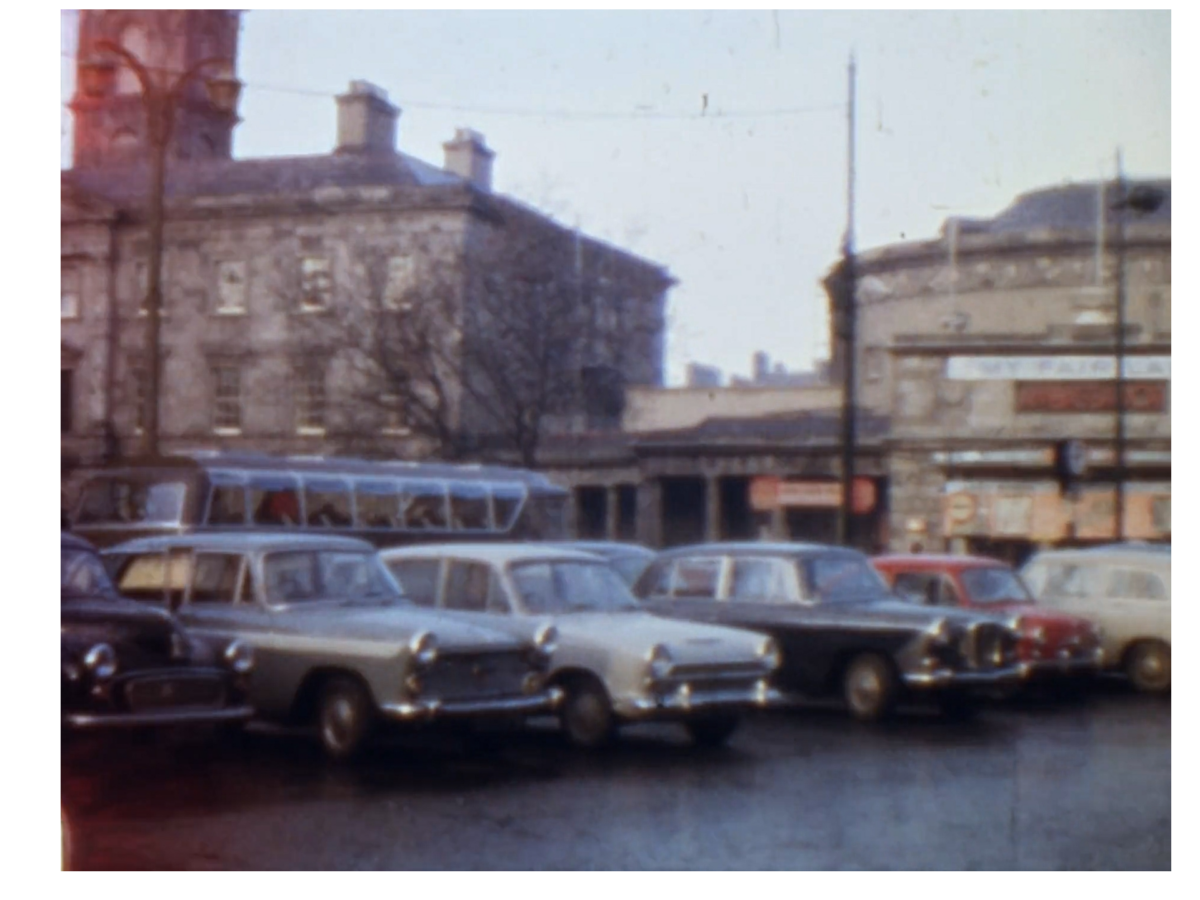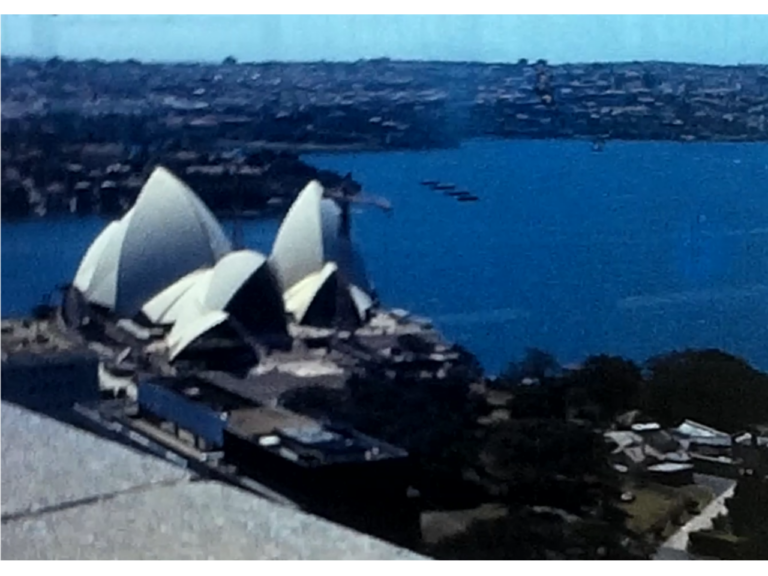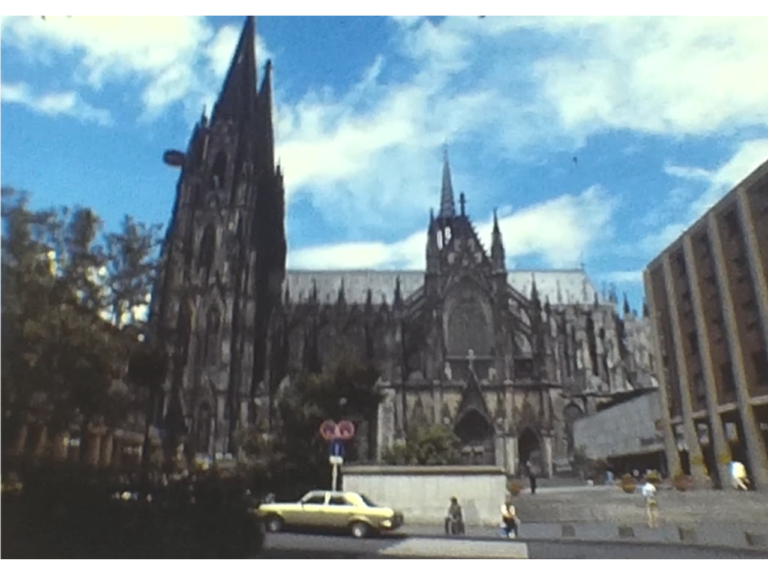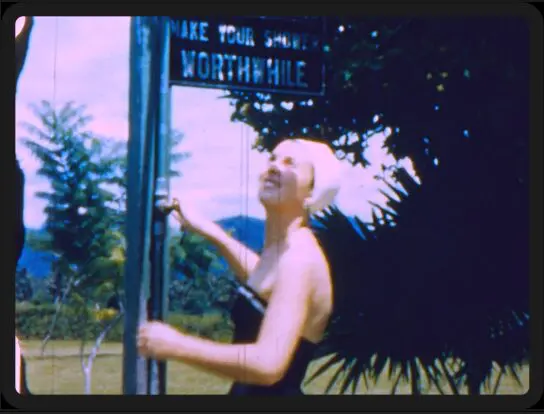An interesting 8mm Home Movie from Dublin taken in 1966
The 8mm film which is features in this post is a Kodachrome Home Movie from Dublin and the surrounding area which was taken in 1966, and unlike many of the films on Everything Vintage, I actually have a fairly detailed description of the places that appear in it.
The Home Movie from Dublin
The movie is shown above, and the description of the film’s contents is shown below. It was written by my son James’s girlfriend, Marlowe who was born in Dublin, and is a history student studying at the same university as him.
Detailed description of the Home Movie from Dublin
First shot from 0:05 to 0:33
This opens on the Rotunda Hospital, the oldest maternity-specific hospital in the world, on Parnell St as it hits O’Connell St. It then pans around past the Ambassador Cinema1, the round building to the right of the Rotunda, and focuses on the monument to Charles Stewart Parnell (leader of the IPP).
Second shot from 0:33 to 0:40
This is the street sign for O’Connell St Upper — taken from more or less the same spot as the first section of the film, just having moved a bit to the right. It’s the old style for the signs; these days they’re blue and have a number indicating postal district on the right. O’Connell St is one of the main streets in Dublin’s shopping district, and O’Connell St Lower hits the river Liffey.
Third shot from 0:40 to 0:49
This opens on Parnell’s monument again. It’s from a different angle and zooms out to show the Rotunda again.
Fourth shot from 0:49 to 1:00
This is taken from standing beside Parnell’s monument, looking down Cavendish Row, which turns into Parnell Square East, towards the Abbey Presbyterian Church which can be seen. The Ambassador is still visible on the left, and O’Connell St is behind the camera. The figure standing in the middle of the road is probably in the Gardaí, but we can’t be sure.
Fifth shot from 1:00 to1:20
This is Nelson’s Pillar, which stood in the middle of O’Connell St, where the Spire is now. This narrows when this footage was taken down to more or less a two-month window: between 01 Jan 1966 and 07 Mar 1966, inclusive. The film was marked 1966 on the reel, so we know that it’s sometime that year, but Nelson’s Pillar was blown up on 08 Mar 19662 so the film must have been shot before then.
Sixth shot from 1:20 to 1:32
This is of the GPO (General Post Office), which sits on O’Connell St and was the rebel headquarters during the Easter Rising. As a result of this, it got utterly destroyed and had to be re-built although it’s use didn’t change and it’s still a post office to this day.
The shot then pans across to look at Nelson’s Pillar again. From what we can make out on the signs on the buses, the bus route numbering system has been entirely re-done since then too.
Seventh shot at 1:32
Unfortunately, this is very blurry, unclear shot which probably happened when the photographer forgot to turn the camera off when they put the camera down!
Eighth shot from 1:32 to 1:44
This shot is taken further down O’Connell Street again, looking this time at the statue of Daniel O’Connell himself. It’s a three-layer statue, with O’Connell at the top, then a bunch of figures representing various parts of Irish society, then four winged women representing other things. This statue has sixteen bullet holes from the Easter Rising.
Ninth shot from 1:44 to 1:56
This is taken on O’Connell Bridge, which is what O’Connell Street turns into when it hits the river Liffey, looking west up the river into the city. Christchurch Cathedral is just about visible in the background, on the Southside.
Tenth shot from 1:56 to 2:10
This is Parliament House3, which until the 1800 Act of Union housed the Irish Parliament. It now houses the Bank of Ireland, a commercial bank.
This shot is taken from College St, and Parliament House sits on D’Olier Street (one of the two streets O’Connell Bridge turns into on the other side) and College Garden. The railings on the left of the shot as it pans to across are those of Trinity College Dublin, which curves around and faces Parliament House.
Eleventh shot from 2:10 to 2:23
This is inside the grounds of Trinity the main Protestant university of the Republic of Ireland, which was established in 1592 by Elizabeth I of England and is the only college of the University of Dublin. This shot is taken having just entered the grounds via College Gardens.
Twelfth shot from 2:23 to 2:29
This is still Trinity, this time showing a student (colloquially known as a Trinner, though generally only in self-reference) selling tickets to The Country Wife (“SU Players presents”).
Thirteenth shot from 2:29 to 2:43
This is Parliament House again, but from another angle, looking down D’Olier Street towards the river Liffey. It then pans left to slightly look down Dame Street, which is perpendicular to D’Olier Street.
Fourteenth shot from 2:43 to 2:57
Probably Sandymount Strand, a big long beach in Dublin although it’s not perfectly clear. These days that skyline would include the Poolbeg Chimneys (completed 1971), which would make it much easier to identify.
Fifteenth shot from 2:57 to 3:01
This rather shaky shot from a car window shows St Anne’s Catholic Church, Shankill, an unsignificant but pretty parish church on the outskirts of Dublin. The black box with yellow on it just about visible at the start of this shot is an Automobile Association phone box, which is no longer there.
Sixteenth shot from 3:01 to 3:04
Sign indicating the way to go to Dublin (which doesn’t necessarily mean it’s particularly far outside the city), followed by a street sign for Newtown Avenue, very probably the one in Blackrock, a middle-class suburb of Dublin.
Seventeenth shot from 3:04 to 3:16
Another view of O’Connell’s statue and then Nelson’s Pillar, this time taken from a car driving down O’Connell Street. An ad for the car fuel brand Caltex is visible on one of the buildings.
Eighteenth shot from 3:16 to 3:29
Dublin’s seafront, specifically the bit in Howth (another middle-class suburb of Dublin, but once a separate fishing town). Howth Lighthouse can be seen once the shot pans to the right.
Nineteenth shot from 3:29 to 3:34
This is of the island known as Ireland’s Eye, which is off Howth. It has no people but lots of significant bird populations, and tourists love it.
Twentieth shot from 3:34 to 3:46
More of Howth’s coastline.
Visible is the Martello tower, built in 1805 in case Napoleon attacked, which now houses Ye Olde Hurdy-Gurdy Museum of Vintage Radio. Also visible is the Cliff Hotel & Café, later renamed to the Dalriada Hotel and then we see the Asgard Hotel (which burned down) now called Asgard Apartments.
Twenty-first shot from 3:46 to 3:53
The two figures in this scene are standing on the curved stone steps at Howth Harbour, from which Howth Lighthouse is visible.
Twenty-second shot from 3:53 to 4:01
Continues the scene from the Twenty-first shot, but from a different angle, and it pans across to show Ireland’s Eye again.
Twenty-third shot from 4:01 – 4:08
Shows Howth again, this time as viewed from Howth Harbour’s curved stone steps.
Twenty-fourth shot from 4:08 to 4:16
The figures above continue their stroll by walking down the curved stone steps.
- which seems to have been showing My Fair Lady at the time, and is now an events venue for the Gate Theatre [↩]
- this is presumed to have been to mark fifty years since the 1916 Easter Rising [↩]
- the world’s first purpose-built bicameral parliament building [↩]
Discover more from Everything Vintage
Subscribe to get the latest posts sent to your email.




